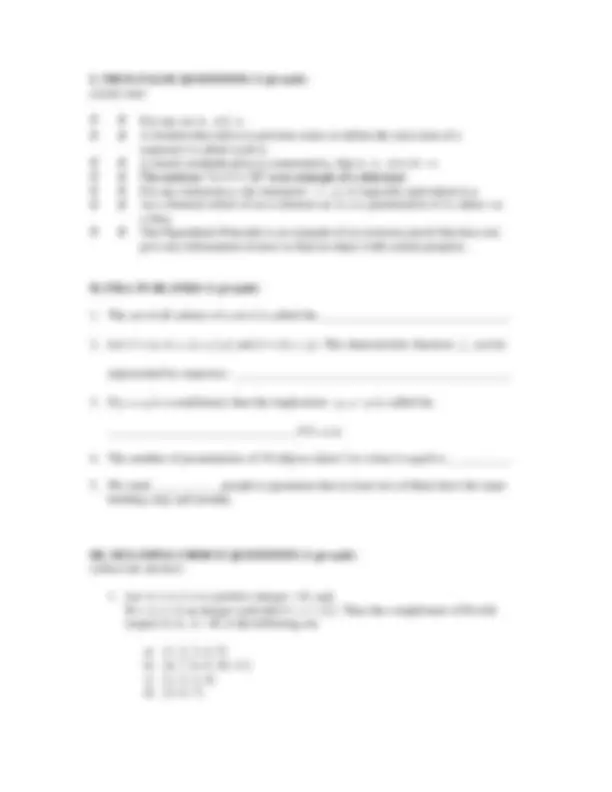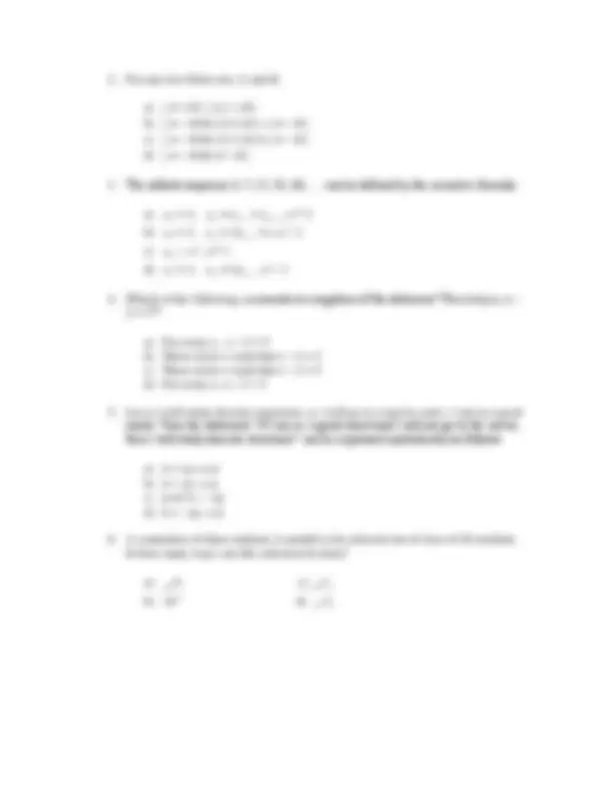




Study with the several resources on Docsity

Earn points by helping other students or get them with a premium plan


Prepare for your exams
Study with the several resources on Docsity

Earn points to download
Earn points by helping other students or get them with a premium plan
Community
Ask the community for help and clear up your study doubts
Discover the best universities in your country according to Docsity users
Free resources
Download our free guides on studying techniques, anxiety management strategies, and thesis advice from Docsity tutors
Material Type: Assignment; Class: Discrete Structures; Subject: Mathematics; University: Marshall ; Term: Spring 2008;
Typology: Assignments
1 / 4

This page cannot be seen from the preview
Don't miss anything!



STUDY SHEET for MIDTERM #1 (Monday, February 25)
The best way to prepare to the midterm is to read the book and to do the homework exercises. Please, take time to go over the material.
Here is what you have to have an idea about:
f) Mod-n functions. g) Representation of integers in different bases.
a) | A B | | A | | B | b) | A B | | A | | B | | A B | c) | A B | | A | | B | | A B | d) | A B | | A B |
a) a 1 (^) 3 , an an 1 an 2 , n 2 b) a 1 (^) 3 , an 2 an 1 1 , n 2 c) an n^2 , n 1 d) a 1 (^) 3 , an 2 an 1 , n 2
a) For every x , x – 2 5 b) There exists x such that x – 2 = 5 c) There exists x such that x – 2 5 d) For every x, x – 2 > 5
a) (r q) p b) (r q) p c) p (r ~q) d) (r ~q) p
a) 20 P 3 c) 20 C 3 b) 203 d) 22 C 3